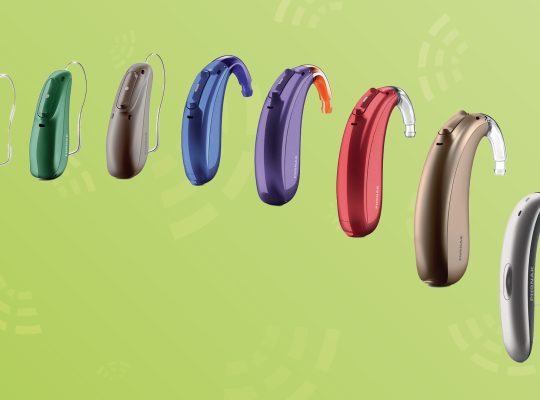Floppy ears are a common cosmetic feature in children and adults. Although not a medical condition, floppy ears can lead to insecurity and sometimes even bullying. In this article, we will discuss what floppy ears are, what the possible causes are, what treatment options exist, and how to regain your self-confidence even if you are not considering surgery.
What Are Floppy Ears?
Floppy ears refers to ears that protrude forward or sideways from the head more than normal. The medical term for this is otapostasis. Flap ears vary in severity, and while they do not cause health problems, they can affect how a person sees himself or herself. Especially in children, the shape of the ears can often be the subject of ridicule, which can lead to lower self-esteem.
Causes of Flap ears
Floppy ears are usually caused by genetic factors. If one or both parents have floppy ears, chances are their children will inherit them as well. Some specific causes include:
- Excessive Cartilage Growth: Excessive cartilage growth can cause the auricle to take on an abnormal shape, causing the ears to protrude more.
- Poorly Shaped Cartilage: Sometimes the cartilage in the ears is not the right shape, so the ears do not fit tightly against the head.
- Absence of the Antihelix: The antihelix is a natural crease pattern in the ear. In some people, this crease formation is absent, causing the ears to become flatter and more prominent.
- Genetic Factors: As mentioned earlier, floppy ears are often hereditary. It can be passed from generation to generation.
Psychological Impact of Flap Ears
Although floppy ears do not pose a health risk per se, they can have a significant impact on a person’s mental health, especially in childhood. Children with floppy ears may be the target of bullying, which can lead to embarrassment, social isolation and lowered self-esteem.
In adults, floppy ears can also cause insecurities, especially in a world where appearance often plays a big role in self-image and success. The influence of social media and beauty ideals can make a person with floppy ears feel less attractive, even if others don’t pay attention to them.
Treatment options for Flap ears
Although there is no medical need to correct floppy ears, many people choose to undergo cosmetic surgery to change the shape of their ears. Here are some common treatment options:
1. Ear correction (Otoplasty).
Otoplasty, also known as ear correction, is a surgical procedure performed to change the position and shape of the ears. The procedure is relatively simple and safe, and can be performed on both children and adults. During surgery, a small incision is made behind the ear, allowing the surgeon to reshape or remove cartilage to make the ears lie closer to the head.
The procedure usually takes one to two hours and is usually performed on an outpatient basis. Recovery time is about a week, although it may vary depending on the patient.
2. Non-surgical Solutions.
For young children, nonsurgical methods, such as ear bandaging or splinting, can be effective if used at an early age. These methods are especially appropriate for infants because the cartilage in their ears is still flexible and adaptable.
3. Ear Plasters and Headgear
Some people choose to use temporary solutions, such as ear patches or special headgear to hold the ears closer to the head. While these methods do not provide a permanent solution, they can help reduce uncertainty at important moments, such as a photo or video shoot.
-
 Otostick flapoor stickers baby€27,99
Otostick flapoor stickers baby€27,99 -
 OtoStick flapoor stickers€23,99
OtoStick flapoor stickers€23,99
When is an ear correction recommended?
Not everyone with floppy ears needs surgery. It is important to consider whether the floppy ears really have a negative impact on daily life and self-image. Ear surgery may be considered in the following situations:
- Severe Insecurities: If the floppy ears lead to severe insecurity and it affects quality of life, surgery may be the answer.
- Bullying: Especially in children, ear surgery can be a way to prevent or stop bullying.
- Cosmetic Reasons: Adults often choose otoplasty for aesthetic reasons. For example, if the shape of the ears is not harmonious with the rest of the face, this may be a reason to consider the procedure.
Regaining Self Confidence Without Surgery
While surgery can be a solution to floppy ears, it is important to recognize that your appearance does not define your worth as a person. There are several ways to regain self-confidence without the need for surgery:
1. Positive Self-Esteem Development
Accepting your appearance can be a powerful way to boost your self-confidence. There are countless stories of people who have embraced their floppy ears as part of their unique identity. By working on a positive self-image and learning to appreciate what sets you apart from others, you can find inner strength.
2. Counseling and Therapy
For people who struggle with their appearance, therapy can help promote self-acceptance. A therapist can offer guidance in developing a more positive self-image and overcoming insecurities that stem from floppy ears.
3. Hair Styles and Accessories
There are several ways to divert attention from floppy ears, such as wearing certain hairstyles or using accessories such as hats or scarves. This can be an effective, non-invasive way to feel more comfortable with your appearance in social situations.
Conclusion
Flap ears are a common cosmetic feature that do not affect health, but can affect self-esteem. Fortunately, there are several treatment options available, ranging from surgical procedures such as otoplasty to nonsurgical methods such as ear dressing. But above all, it is important to remember that everyone is unique, and that developing self-acceptance and a positive self-image can be more powerful than any surgical procedure.
If floppy ears make you feel insecure, consider the various solutions and, above all, think about what makes you happy. Whether that’s a surgical correction or embracing your appearance, ultimately it’s about being happy with who you are.









